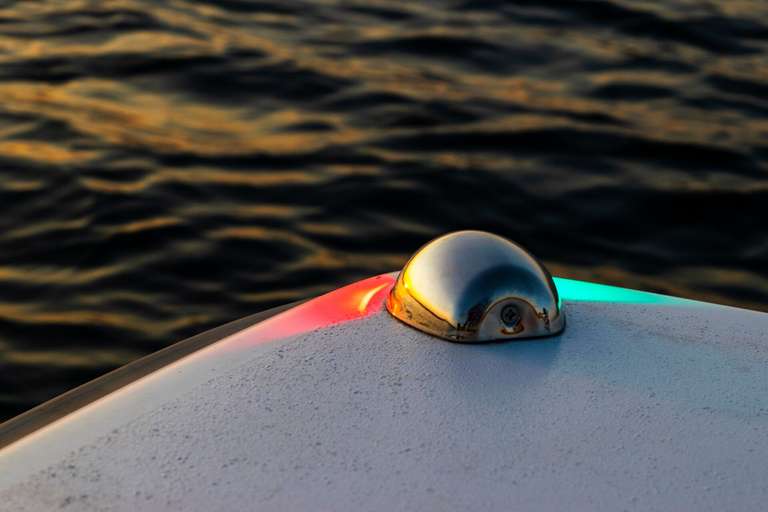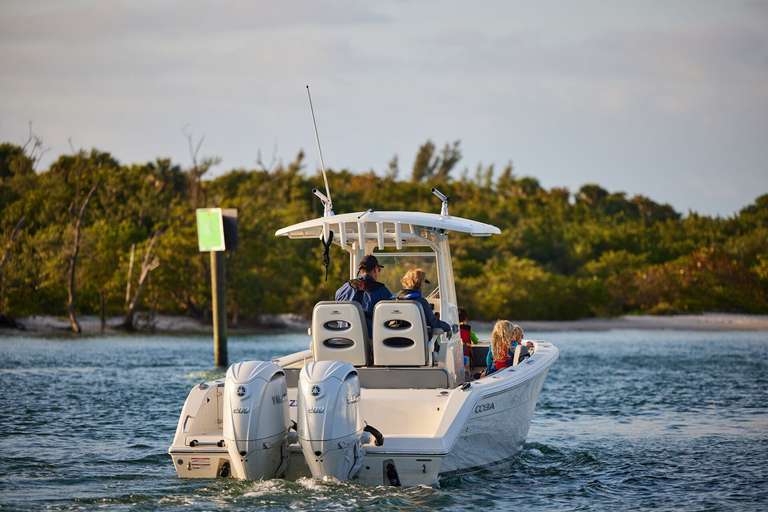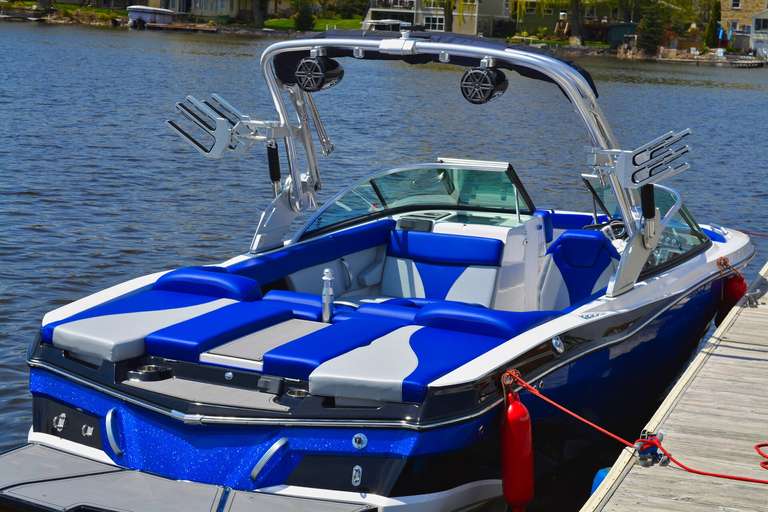4 Types of Boat Engines: What's the Difference?
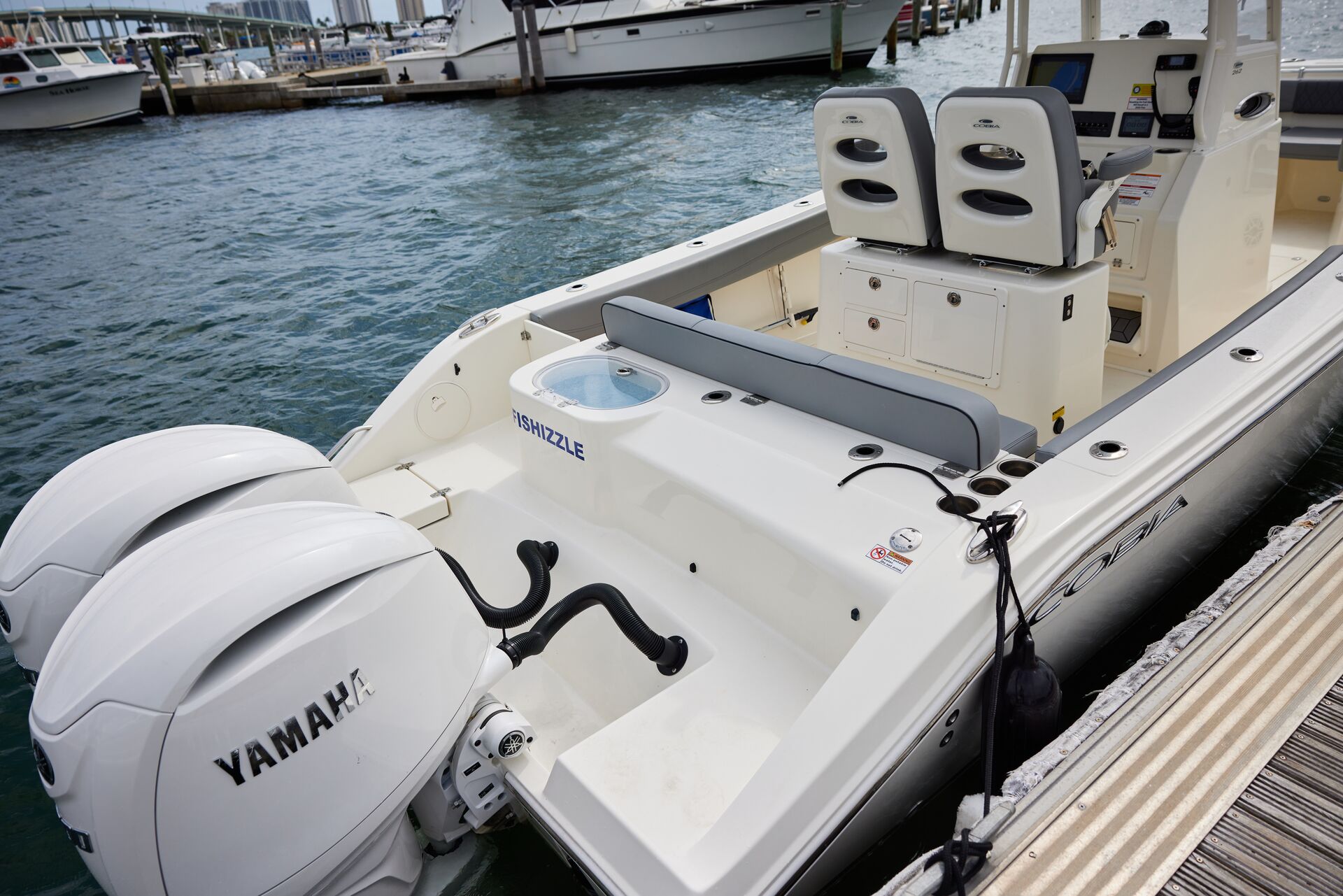
Do you know the type of engine that powers your boat? Understanding boat engines and how they work is part of the territory that comes with owning or operating watercraft.
The type of engine can impact how you operate and maintain your boat. So, keep reading to learn more about four types of engines that apply to boats and how they work.
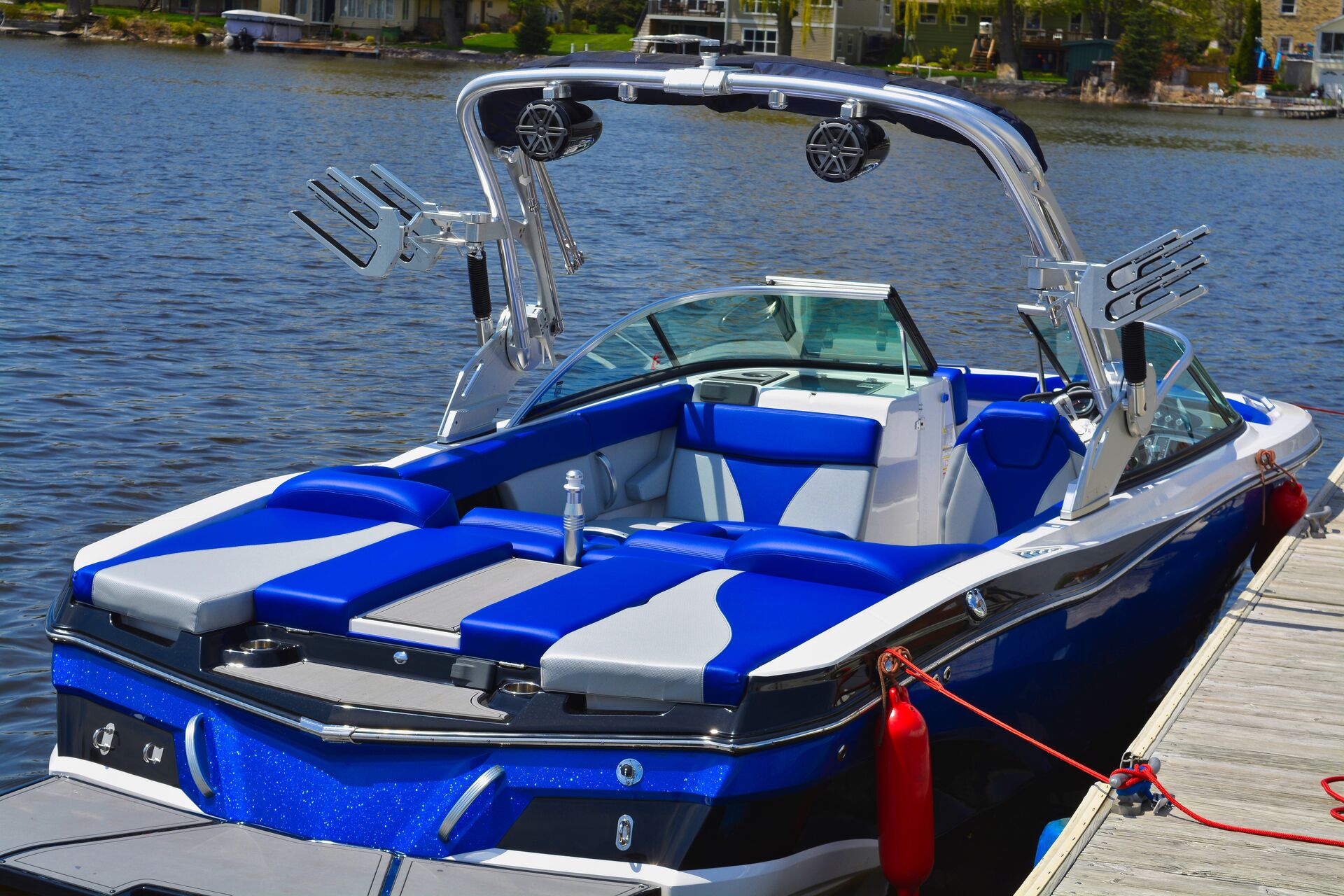
4 Types of Boat Engines
Like vehicles on the road, boats can have different types of engines. The engine is a crucial part of every motorized boat, and it's important to understand how yours works to keep your boat maintained and for proper winterization at the end of the season.
Powered boats have one of four types of engines: outboard, inboard, stern drive, and jet drive engines. Here's a quick overview of each engine type and how they work!
1. What Is an Outboard Engine?
Outboard engines are called "outboards" because they are mounted on the boat's transom outside the boat's hull.
Outboard motors are self-contained units that include the engine, gearbox, and propeller. These engines also control the steering.
On smaller boats, a hand tiller is often used. On larger outboards, the operator uses a steering wheel to adjust the engine's direction.
2. What Is an Inboard Engine?
Inboard engines are four-stroke automotive engines located inside the boat's hull. These engines power a drive shaft connected to and moving a propeller.
Unlike outboards, inboard engines do not steer the boat. Inboard engines have a rudder or rudders behind the propeller controlled by a steering wheel.
Maintenance and repairs are more difficult and often more costly for an inboard engine than for an outboard engine.
3. What Is a Stern-Drive Engine?
Stern-drive engines are a combination of inboard and outboard engines. They are also called inboard/outboards (I/Os) because they share features with both engine types.
These engines are similar to inboard engines in that they both use a four-stroke automotive engine mounted inside the hull.
Similar to outboard engines, stern-drive engines use a drive unit to steer the boat. Turning the steering wheel turns the drive unit, which determines the boat's direction.
4. What Is a Jet-Drive Engine?
A jet-drive engine uses water to steer the boat. The propeller is called an impeller and is housed inside the engine. Water is pulled into the impeller and then forced out, which provides thrust for the boat.
Changing the direction of the water as it leaves the unit allows for steering. However, jet-drive engines will lose some steering control at low speeds due to less water moving through the jet.

Practice Safe Driving When On the Water
No matter what type of engine your boat has, putting safety first is not an option. Bigger motors make your boat a bigger risk on the water, but small engines can be dangerous, too, if not handled properly.
Whether it's a propeller or an inboard motor, your boat needs a safe driver. The best way to learn how to operate any vessel safely is to take a boater education course. ilearntoboat makes it easy (and fun) to learn safety essentials that you can apply any time you take a boat out on the water!
Plus, our courses meet your state's requirements for boater education. This means that after completing your course and passing the exam, you get a boater education card (or boating license) verifying that you can operate a boat safely and legally on your state's waterways.
Enjoy a gamified learning experience that can save lives on the water when you take the course for your state through ilearntoboat!
First published in 2021. Content most recently reviewed and updated for accuracy and relevancy December 4, 2024.

